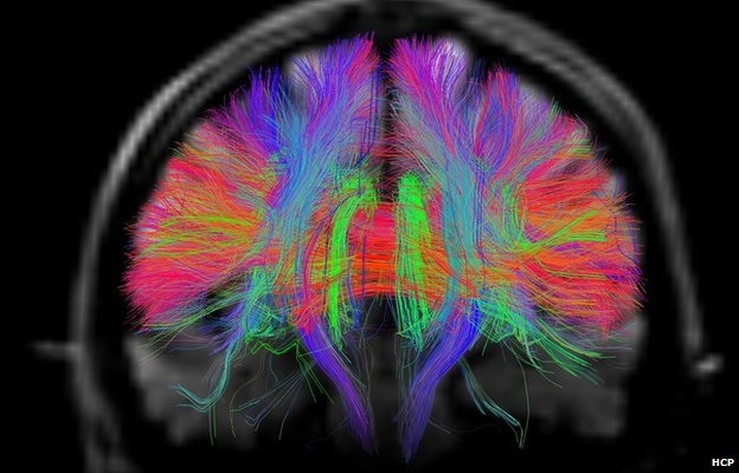In this post I would like to share some insights on pain that I alluded to last time, in particular, how aspects of manual brain therapy work might help.
In the previous post I referred to an article published in the Australian Magazine called Training the brain to beat pain (Norman Doidge The Australian January 31, 2015).
I also referenced the following paragraph towards the end of the article:
"He was helped by Marla Golden, an emergency physician who specialises in chronic pain, whom he met in 2008. Golden also trained in osteopathy, a hands-on practice using touch, sound and vibration. They have pioneered a true mind-brain-body approach to chronic pain in which patients receive simultaneous neuroplastic input from the mind and body to influence the brain. Golden’s hands are so sensitive, Moskowitz says, she sometimes seems to “see” with them, finding problem areas and rapid ways to ease chronic pain. I have followed a number of their patients and seen remarkable progress."
The picture above represents advances made in recent times with respect to pain. This is a fMRI or functional magnetic resonance image showing just how many areas of the brain can represent pain. Even this picture is by no means comprehensive!
Problems exist because each of these areas can represent different types of pain from the body, from different areas and of varying intensities. The physiology and biochemistry of each area can be different and each area has it's own special connections with other parts of the brain. This is one reason why medications can be effective for one type of pain and not another. Specifics count.
However, the good news is that these specific characteristics give these varying brain parts unique attributes that make them stand out from surrounding brain tissues. These attributes can be felt by the human hand and are probably what the magazine article was referring to when it says Marla Golden could "see" with hers. Each of the brain structures has it's own feel. You might also refer to it as an identifying energy or vibration unique to the make up of the structure. It will also allow you to identify when brain tissue is dysfunctional or operating accordingly.
With proper assessment and treatment these structures that represent pain can be helped to attain normal function through manual brain therapy work so that they give a more normal picture of the physiological state of the tissue said to be involved in causing chronic pain. It is a manual way of down regulating the heightened and learned response of the brain structure that may be disproportionate to the actual condition of the 'injured' tissue in the back or leg, for example.
For those who would like a more comprehensive look at the structures involved, I will publish some articles in the Paragon Library in coming weeks.
Yours in health,
David Macdonald
Director / Paragon Health Industries
In the previous post I referred to an article published in the Australian Magazine called Training the brain to beat pain (Norman Doidge The Australian January 31, 2015).
I also referenced the following paragraph towards the end of the article:
"He was helped by Marla Golden, an emergency physician who specialises in chronic pain, whom he met in 2008. Golden also trained in osteopathy, a hands-on practice using touch, sound and vibration. They have pioneered a true mind-brain-body approach to chronic pain in which patients receive simultaneous neuroplastic input from the mind and body to influence the brain. Golden’s hands are so sensitive, Moskowitz says, she sometimes seems to “see” with them, finding problem areas and rapid ways to ease chronic pain. I have followed a number of their patients and seen remarkable progress."
The picture above represents advances made in recent times with respect to pain. This is a fMRI or functional magnetic resonance image showing just how many areas of the brain can represent pain. Even this picture is by no means comprehensive!
Problems exist because each of these areas can represent different types of pain from the body, from different areas and of varying intensities. The physiology and biochemistry of each area can be different and each area has it's own special connections with other parts of the brain. This is one reason why medications can be effective for one type of pain and not another. Specifics count.
However, the good news is that these specific characteristics give these varying brain parts unique attributes that make them stand out from surrounding brain tissues. These attributes can be felt by the human hand and are probably what the magazine article was referring to when it says Marla Golden could "see" with hers. Each of the brain structures has it's own feel. You might also refer to it as an identifying energy or vibration unique to the make up of the structure. It will also allow you to identify when brain tissue is dysfunctional or operating accordingly.
With proper assessment and treatment these structures that represent pain can be helped to attain normal function through manual brain therapy work so that they give a more normal picture of the physiological state of the tissue said to be involved in causing chronic pain. It is a manual way of down regulating the heightened and learned response of the brain structure that may be disproportionate to the actual condition of the 'injured' tissue in the back or leg, for example.
For those who would like a more comprehensive look at the structures involved, I will publish some articles in the Paragon Library in coming weeks.
Yours in health,
David Macdonald
Director / Paragon Health Industries


 RSS Feed
RSS Feed